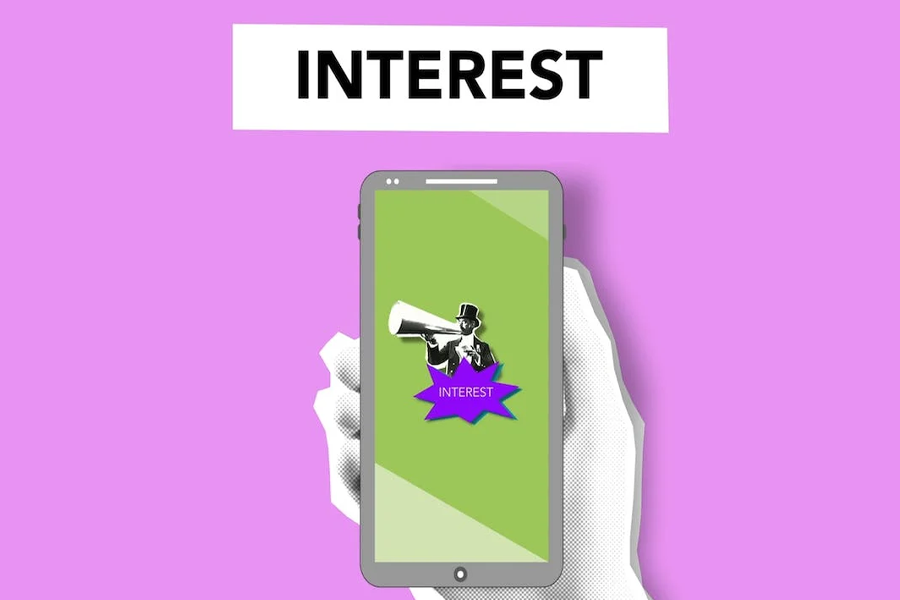The tone of voice is critical to stand out in today’s crowded online market. To deeply understand this concept, we’ll delve into what it is, why it is significant, and what actions to take to craft it, with helpful tips.
Craft that tone that fits your brand best in the following sections!
What Is a Tone of Voice?

A tone of voice is a specific style or expression in a given instance of communication. It can vary depending on the context, audience, or medium and adapts to suit the specific situation or message.
The tone of voice is an adaptable and situational expression of the brand voice. Businesses use a distinctive and consistent tone of voice to communicate with their audience.
The brand voice should be memorable and instantly recognizable. It comprises the word choice, the level of formality, and the overall expression used in both written and spoken content. This fosters recognition and builds a stronger emotional connection with their audience.
It’s the unique personality and style that you need to shine in everything you post for your brand.
It keeps people talking about how your content sets the vibe, letting them see your brand’s values through serious, witty, relaxed, or conversational writing.
That right tone of voice helps your business connect with people and shapes how you want your brand to be perceived. Once you get it right, your writing will feel authentic and appealing to your audience, which will attract the right audience and help your business prosper.
Steps to Decide on Your Brand’s Tone of Voice

Discover the intricacies of your brand voice to better connect with your audience, establish a strong brand identity, and create engaging content for them to remember, just like how famous companies do it.
Each section here explores important aspects. Let’s get started.
Understanding Audience Analysis
Studying your audience’s data is the first step. Demographics, psychographics, behavioral, situational, and cultural analysis will help you gain important insights in setting your brand voice.
Understanding their language, interests, and pain points is important to allow business owners like you to create relatable content. It can significantly impact their buying decisions and overall engagement with your brand.
Tips for getting started with audience analysis:
- Surveys and feedback loops: Ask the question directly! You can ask individuals or focus groups specific questions about your audience’s preferences, challenges, and what they love about your brand. Their responses provide invaluable insights into shaping a positive tone of voice.
- Social media listening: Monitor conversations on social media platforms that are all about your industry. Check out comments, reviews, and interactions to catch the topics you need for your analysis.
- Data analytics: Use analytics tools to understand user behavior and optimize your website. Analyze metrics like bounce rates, time spent on pages, and popular content to understand better what gets them hooked.
Audience analysis is important in developing your brand strategy. This knowledge allows you to create targeted and personalized campaigns, optimize resource allocation toward the most impactful marketing channels, and create content for maximum relevance.
Defining Your Brand Personality

Your brand personality shapes how you communicate. It is your brand’s character. If your brand elements communicate friendly, helpful, and upbeat, a consistent conversational tone will likely match that vibe. A different tone of voice will bore potential buyers.
Pinpointing your brand’s personality will let you craft the right tone that harmonizes with your unique brand identity.
To determine your brand personality, perform the following steps:
- Soul search: Start by looking back at your company’s values and mission. What does your brand value the most? How do you want your brand to be perceived by your audience?
- Align audience: Consider who your audience is and what hooks them. Your brand personality should align with what attracts your target customers.
- Analyze competitors: Look into similar brands and how they present themselves. Identify what works and doesn’t in your industry to guide your decisions.
Aligning the tone of voice with your brand identity is important in defining your brand personality. Ensuring that the style resonates with your brand identity, values, and desired image creates an authentic experience and builds trust with your audience.
Understanding the Different Types of Tone
The tone in writing covers various styles, from high to low tones. High tones mean positivity, enthusiasm, and friendliness, most common in optimistic content.
Here are some tone of voice examples:
- Conversational tone: Casual, respectful, friendly, and sometimes enthusiastic tone of voice, and resembles a spoken conversation. This voice example is perfect for engaging with your customers on social media, blog comments, or customer support.
- Informal tone: This is suitable for friendly emails, social media content, or blogs. It expresses a relaxed, casual voice style and sometimes uses humor.
In contrast, low tones communicate formality, seriousness, and sometimes solemn vibe types of content.
Let’s see them below:
- Professional tone: This writing style is polished and business-oriented but less rigid than formal. This is most common in corporate communications, business presentations, and professional blogs.
- Formal tone: This tone is polished, professional, and technical. This writing style is ideal for official documents, academic writing, and expressing a transactional, severe tone of voice.
The tone you use in your content significantly impacts your customer engagement and brand perception. Thus, an irreverent tone will not work if your brand image is formal and professional, but it will if your image is a disruptor or more informal.
Adapting Tone to Different Content Types
Now that you already know more about market research and audience analysis, it’s time to learn how to adapt to different marketing materials. Tailoring your tone to different existing content formats while keeping it aligned with your audience’s preferences reinforces your brand’s identity.
It is essential to work on adapting your tone to fit the content type:
- Know your audience. Adapt your tone based on the existing content to match the preferences and expectations of your target audience for each content format.
- Align with existing content. Match your tone with the purpose of the content type. Conversational tones work well in blogs or social media interactions, while formal tones suit legal or policy pages.
- Maintain consistency. Adhere to a consistent brand voice across all platforms to reinforce unique brand identity.
This digital marketing strategy showcases a keen awareness of your audience’s preferences, optimizing your communication to all types of content for maximum impact and stronger connections.
Tone and Cultural Sensitivity
Another thing to consider in crafting your brand’s voice is cultural sensitivity. Acknowledging and respecting the diversity of your audience is important to connect with your audience because it demonstrates respect, trust, and inclusivity.
These tips will help you be culturally sensitive:
- Research cultural norms: Understand their values, preferred communication styles, and taboos to gain a deep understanding of the cultural intricacies of your target audience.
- Seek feedback: Request input from individuals representing diverse cultural backgrounds to review your content for potential cultural insensitivity.
- Adapt and evolve: Be open to adapting your tone based on feedback and cultural insights. Continuously refine your approach to ensure inclusivity and cultural appropriateness.
- Choose your words wisely: Carefully select your vocabulary and avoid colloquialisms or idiomatic expressions that may not translate well across your target audience.
You should consider the language, humor, idioms, values, customs, and traditions to ensure a positive tone of voice across various cultural backgrounds.
Maintaining Consistency
Being voice-consistent in your brand’s written tone across various channels establishes your brand identity. It means aligning your voice guidelines to ensure a recognizable presence – be it formal, conversational, or professional.
This is particularly beneficial in the Philippines. Filipinos deeply appreciate tradition and repetition embedded in societal values. This sentiment may extend to consumer preferences, so maintaining a cohesive tone can result in success.
Here are guides for you to follow:
- Documented style guide. Create a detailed style guide that covers tone, language, and specific examples for different channels. This guide serves as a reference point for you in creating content within your brand.
- Team training. Train your team about the defined tone and message architecture. Ensure you and your team understand and implement tone using voice guidelines.
- Regular audits and feedback loops. Regularly audit content across channels to ensure consistency while welcoming feedback from customers and team members to improve your brand’s communication strategy.
When customers encounter a consistent tone and messaging regardless of the channel, it reinforces your brand’s personality and values. It also strengthens authenticity and helps establish a strong brand presence.
Adjusting Tone for Different Demographics
When targeting a certain age group, your tone should align with their generational preferences and experiences. This enables personalized and relatable communication across your target audience.
To adjust your tone for different demographics:
- Research your audience: Conduct in-depth research to understand each demographic group’s characteristics, preferences, and behaviors.
- Adapt language: Modify the sentence structures, tone, and cultural references to suit the specific demographics, ensuring your communication resonates authentically with each group.
- Integrate feedback: Incorporate feedback from different demographic groups to continuously refine and adapt your tone, ensuring it remains relevant and appealing to each audience segment.
Adapting the tone of your voice for different demographics emphasizes effective communication. It commits to accessibility and builds trust by showing that your brand understands and respects diversity.
Using Narrative Elements to Enhance Engagement
Stories have the power to grab attention. This is why storytelling enhances engagement- because it creates a compelling experience for the audience.
It enables you to humanize your message, making your product or service more than just items for sale. Storytelling evokes emotions on a deeper level, allowing you to connect with your customers and making your content more memorable.
To enhance engagement using narrative elements:
- Use emotional connection: Emotions are incorporated into your story to create a stronger connection and elicit a response.
- Be authentic and relatable: Make genuine and relatable narratives to your audience’s experiences, ensuring they see themselves within the story.
- Use visual elements: Visual elements such as images, videos, or infographics with your narrative enhance engagement through a multisensory experience.
The innate attraction humans have to storytelling makes it advantageous to incorporate narrative elements for enhanced engagement. Utilizing these elements offers a compelling structure that captures and maintains the interest of your audience.
Final Thoughts

In this article, we’ve acknowledged the challenge of determining your brand’s right tone of voice.
We began by defining your brand’s tone of voice as the unique personality and style that shapes how your business connects with the audience, ensuring you understand how to align this tone with your brand’s core values and preferences.Now, put this newfound knowledge into practice and develop a unique and stand-out tone of voice!
Frequently Asked Questions
Why is a brand’s tone of voice important?
Your brand’s tone is its distinct personality reflected in all its content. It shapes how they connect with your audience, showing the brand’s values and how it wishes to be perceived
How can a company define its tone of voice?
Initial steps include understanding your audience, aligning with the brand’s core values, and crafting messages. Analyzing competitors and aligning with the audience’s preferences further shape your company’s tone.
When should I use a high or low tone of voice for emotional appeal?
The choice between the voice’s lowness or highness of tone depends on the intended emotional impact. Use a high-tone profile for content that requires enthusiasm or positivity. A low tone conveying depth and sincerity is more appropriate for serious or deeply emotive topics. The key is aligning the tone with the emotions you want to create in your audience.